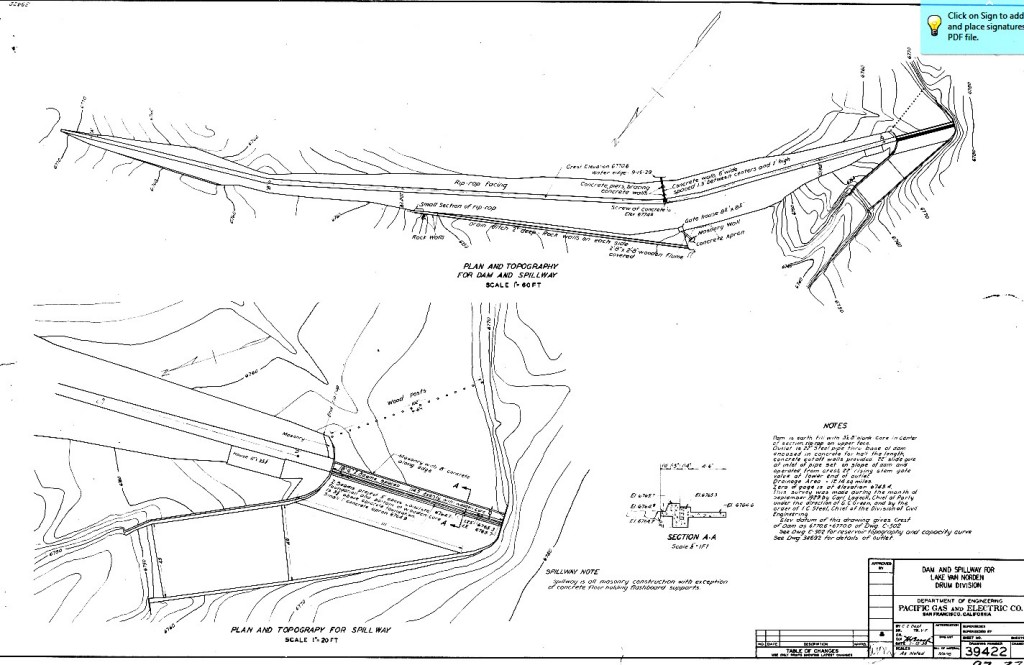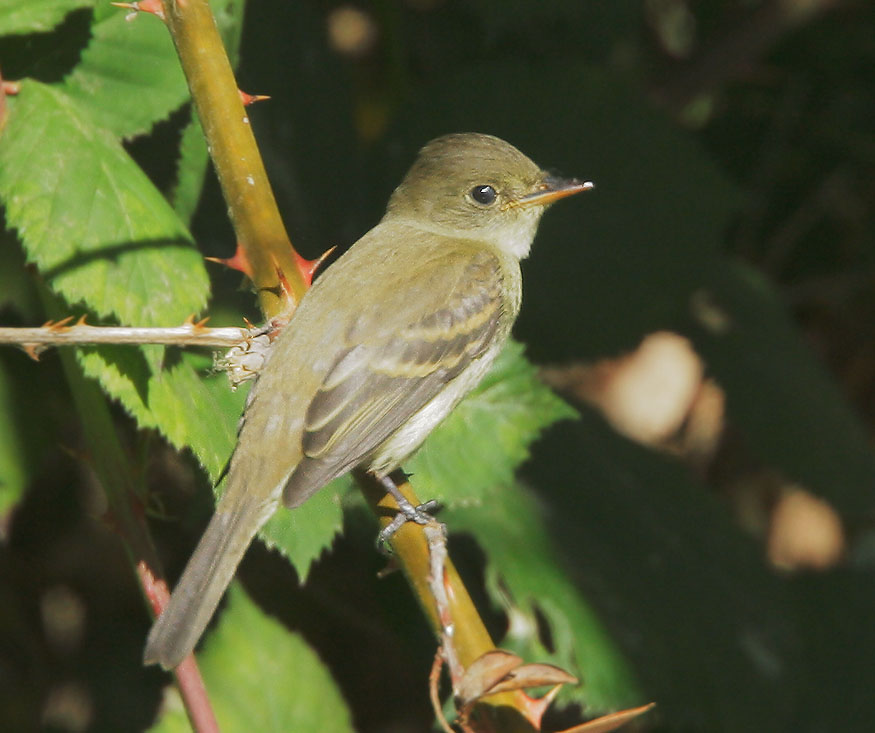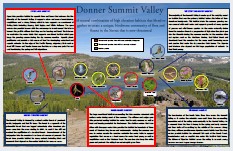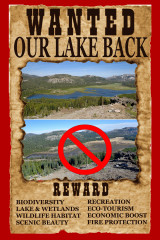I would like to invite everyone to please read the letter of support from Joanne Roubique of the U.S. Forest Service for the TDLT plan to drain Van Norden Lake and wetlands. I think you will all enjoy this example of bureaucratic doublespeak as much as I did.
I would just like to address a couple of the points discussed in the letter. The most important of course is the reference to public safety which is not to be taken lightly. Let’s just look at how the paragraph on safety is worded. It is true that a hydraulic evaluation of Van Norden Dam was done by Balance Hydrologics (although that report has not been made public). Now the next two sentences are the crafty ones. According to this report their engineers concluded that 5 acre-ft is pool size that would not result in increased risk IF THE DAM FAILED. Of course the real question here is WHAT IS THE RISK OF THE DAM FAILING? This is not addressed by any report that I am aware of. You can make this argument for any dam in the country. If Hoover dam failed the results would be catastrophic. Should we tear it down? By this logic we should tear down any structure that could cause damage IF IT FAILED. What is the likelihood that Van Norden Dam would fail? While the studies have not been done, consider the fact that the 1600 ft long existing dam was built and operated safely for over 100 years in containing a 24 ft deep lake of 5800 acre-ft of water. That same infrastructure would now be required to contain a shallow lake that is 400 ft wide and 6 ft in depth at the deepest (average depth is 3 ft) containing 50 acre-ft of water (less than 1% of what it was built for). And what about requirement for a 5 acre-ft pool size? The State Division of Safety of Dams (DSOD) uses a minimum volume of 50 acre-ft for dams when taking jurisdiction. They use this limit because they consider a lake smaller than this does not pose a significant danger to the public. It was publicly stated in a meeting held by TDLT by the DSOD engineer in charge of Van Norden Dam that the state did not consider it a significant safety risk. You can draw your own conclusions as to why the Forest Service has chosen to distort this issue, but it does make a pretty good smoke screen.
I could go on and on about the inaccuracies and unfounded speculations made in this letter (Ranger Roubique admits they have really done no analyses and have no plan yet) but let me just focus in on one inaccuracy that says it all on how to distort the truth to push an agenda. Let’s consider the Willow Flycatcher. The claim is made that “restoring” the meadow will increase the habitat for the Willow Flycatcher. For those of you that don’t know anything about the Willow Flycatcher, it is a small insect eating bird that makes it’s nest in the crooks of Willow branches, thus the name “Willow” Flycatcher. Currently it has been classified as endangered in the state of California because its habitat is being destroyed. Currently in Summit Valley Van Norden Lake supports a wetland area of approximately 70 acres that is made up primarily of Lemon Willow. The Lemon Willow is a favorite of the Willow Flycatcher. The Lemon Willow thrives in the valley right now because Van Norden Lake maintains a high surface water table, thus the wetlands. The Lemon Willow has a root depth of 20 inches which is well suited for wetlands. It is not drought tolerant and will not grow without a high water table. Notching the dam down 5 ft as planned by TDLT would effectively drain the lake and lower the water level in the valley a commensurate amount. This would mean that the Lemon Willow would be left high and dry (the new water level would be 3 ft below the roots) and it would disappear from the “restored meadow”. You only need look at the east end of Van Norden Meadow now to see that it is completely devoid of willow. The result is simple. No Willows, no Willow Flycatchers. And yet Ranger Roubique touts the “restoration” of the meadow as increasing Willow Flycatcher habitat. You don’t have to be a wildlife biologist to understand the illogic of this statement. The smoke is getting thicker.
Of course the question remains as to why the Forest Service is really opposed to a lake and wetlands in the Summit Valley. I don’t know the answer to that but I can speculate (hopefully without any distortions). The Forest Service is tasked with a huge undertaking in managing the Tahoe National Forest. It’s no secret that the federal budget is tight and the agency is underfunded making it difficult to thoroughly manage the forest (consider the poor state of much of the forest in the summit area). Lake and wetland habitat destruction is a major concern today in most of the world. As rare as mountain meadow habitat is, alpine wetland habitat is much rarer. The federal government has made wetland preservation and restoration a major goal and there is a large body of regulations governing wetland habitat today. The presence of lake and wetlands in the Summit Valley would require a significant level of effort and budget by the Forest Service if they were to choose to maintain it. It would be much simpler and require much less resources (money) to remove the lake and wetland habitat. If the Forest Service takes the valley with the lake and wetlands it would be very difficult for them to justify removing the habitat under federal regulations. However, thinking bureaucratically, if TDLT removes them before the Forest Service takes possession, they are off the regulatory hook.
Is the smoke clearing a little?




